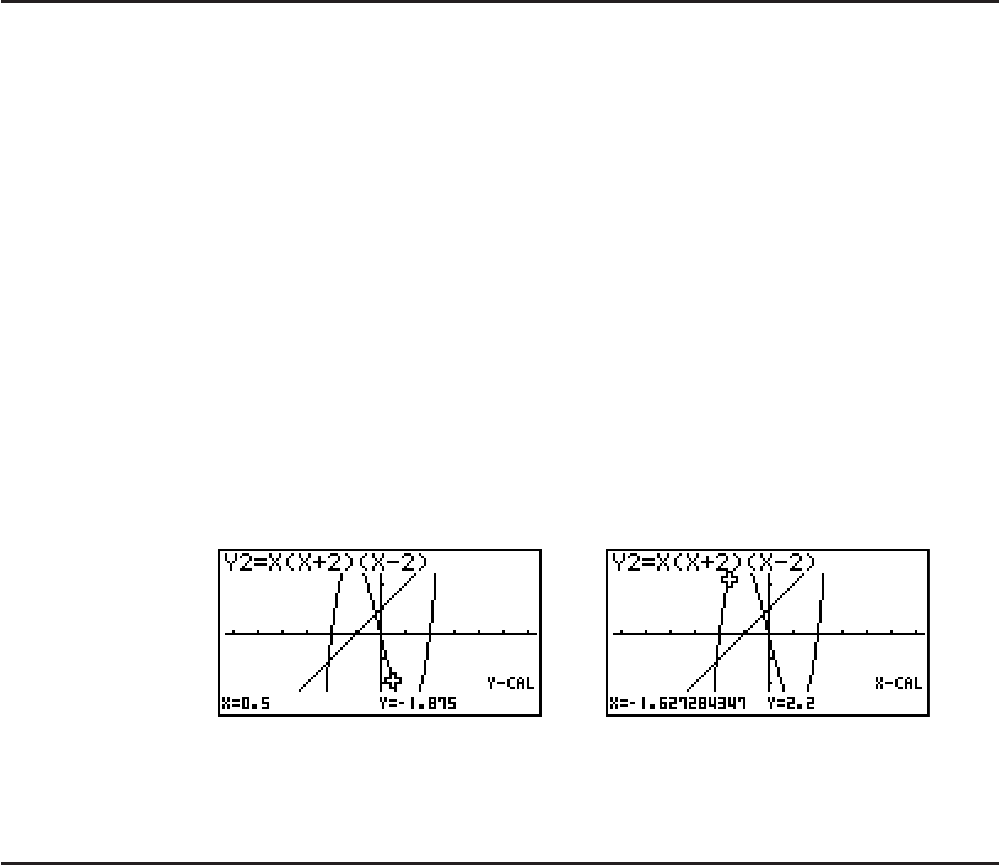
5-32
• You can calculate the point of intersection for rectangular coordinate graphs (Y=f(x) type)
and inequality graphs (Yf(x), Yf(x), YPf(x) or YOf(x)) only.
• Either of the following can cause poor accuracy or even make it impossible to obtain
solutions.
- When a solution is a point of tangency between two graphs
- When a solution is an inflection point
I Determining the Coordinates for Given Points
The following procedure describes how to determine the y-coordinate for a given x, and the
x-coordinate for a given y.
1. Draw the graph.
2. Select the function you want to perform. When there are multiple graphs, the selection
cursor (I) appears at the lowest numbered graph.
(G-SLV)(E)(Y-CAL) ...
y-coordinate for given x
(E)(X-CAL) ... x-coordinate for given y
3. Use DA to move the cursor (I) to the graph you want, and then press U to select it.
4. Input the given
x-coordinate value or y-coordinate value.
Press U to calculate the corresponding y-coordinate value or x-coordinate value.
Example Graph the two functions shown below and then determine the
y-
coordinate for x = 0.5 and the x-coordinate for y = 2.2 on graph Y2.
Y1 =
x + 1, Y2 = x(x + 2)(x – 2)
• When there are multiple results for the above procedure, press C to calculate the next
value. Pressing B returns to the previous value.
• The X-CAL value cannot be obtained for a parametric function graph.
I Calculating the lntegral Value for a Given Range
Use the following procedure to obtain integration values for a given range.
1. Draw the graph.
2. Press (G-SLV)(E)(°
dx). When there are multiple graphs, this causes the
selection cursor (I) to appear at the lowest numbered graph.
3. Use DA to move the cursor (I) to the graph you want, and then press U to select it.
4. Use BC to move the lower limit pointer to the location you want, and then press U.
5. Use C to move the upper limit pointer to the location you want.
6. Press U to calculate the integral value.


















